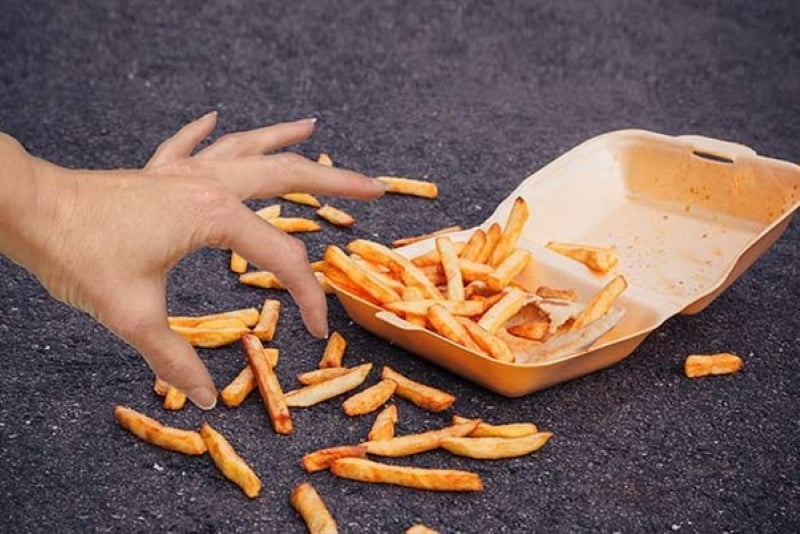A popular concept is that food dropped on the floor can be safely eaten if picked up in a matter of moments. We checked if this is true.
There is a popular saying: “What is quickly raised is not considered to be fallen.” Nowadays, there is a whole theory corresponding to it, the name of which includes five (sometimes ten) seconds. According to the formal justification, there will be so few microbes that will have time to transfer to fallen food during this period that they will be easily destroyed by stomach acid and will not cause harm to the body. The observation concerns purely solid food and, as a rule, does not apply to cases where obvious traces of dirt remain on the food.
Periodically appear in the press results individual studies on this topic, in which the concept is directly or indirectly confirmed. In parallel, a high percentage of people are indicated who have at least once eaten food that fell on the floor (according to the above link - 79%). And, as is customary, such news usually includes British scientists.
The principle behind the five-second rule has been known for a long time. Microbiologist Brian Sheldon and nutritionist Paul Dawson in their bookDid you just eat this?» trace the story back to the legends of Genghis Khan. The Mongol ruler applied the so-called “rule of the Khan” at his feasts: if food fell on the floor, it remained there until Genghis Khan allowed it to be picked up. It was believed that the dishes prepared for Genghis Khan were special - they could be eaten after any test.
Many centuries passed, and people learned about such a thing as bacteria. Moreover, it turned out that bacteria can enter our body through food and cause various diseases, including the most serious ones. Played an important role in this Louis Pasteur's research.
However, in parallel with academic science, ordinary people also developed their own ideas about the limits of what is permissible. What was previously just an abstract opinion began to take shape as a “folk” theory in the 1990s. According to popular science resource Science Friday, for the first time in the English-language press, such a rule in combination with the number of seconds is mentioned in the novel by Brad Lewis “Rowing coach wanted”, released in 1995. Lewis is talking about 20 seconds, but the hero of the 2001 film “Osmosis Jones" became seriously ill after believing the "ten second rule." Between these two works, an advertisement for M&M's chocolate jelly beans appeared, playing on the popular idea:
When the spread of the “n second rule” became widespread, representatives of science also became interested in the issue.
In 2003, Gillian Clark, a student at the Chicago Graduate School of Agricultural Sciences, published the results of his research on the “five second rule”. Clark threw samples of E. coli, gummy bears and cookies onto ceramic tiles that had been pre-treated. Microscope testing showed that Escherichia coli bacteria reached the food in less than five seconds. In addition, Clark conducted a public opinion poll that showed that 70% of women and 56% of men are familiar with the rule and the majority are guided by it when deciding whether to eat food picked up from the floor. In 2004, Clarke's research was noted Ignobel Prize in Healthcare.
In 2006, the above-mentioned Paul Dawson researched the survivability of the bacterium Salmonella typhimurium on floor coverings and the likelihood of its subsequent transmission through contact with sausage or bread. The results were disappointing: a) salmonella can live on such surfaces for up to four weeks; b) during contact it is transferred to food almost instantly.
Another relatively recent study showedthat the number of bacteria that get on food still depends on both the type of food or type of surface, and on time. However, the time available for the transmission of potentially dangerous numbers of bacteria was very often short.
To reduce the potential risk, microbiologist Philip Tierno in his book "The Secret Life of Bacteria" recommends using strictly different shoes at home and outdoors. However, this precaution may not be enough if you do not remember once and for all: there is no “five second rule” in real nature. Moms and dads who forbid children to take food from the floor are absolutely right.
Fake
Read on topic:
1. The Origin Of 'The Five-Second Rule'
If you find a spelling or grammatical error, please let us know by highlighting the error text and clicking Ctrl+Enter.







